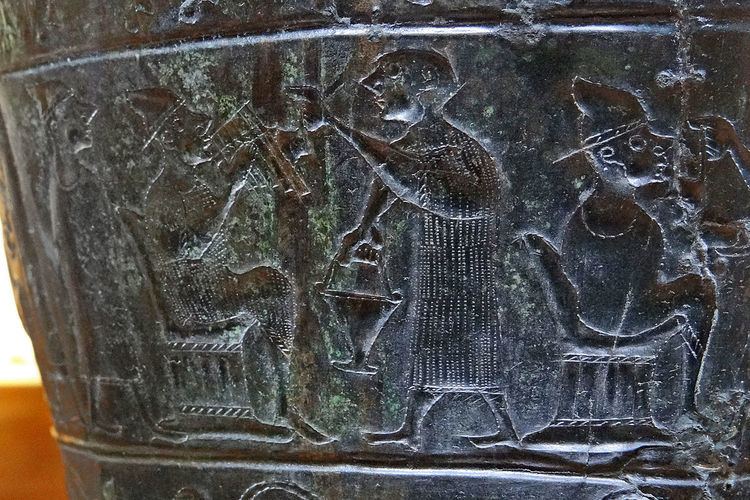 | ||
Toreutics is a term, relatively rare in English, for artistic metalworking, by hammering gold or silver (or other materials), engraving, Repoussé and chasing to form minute detailed reliefs or small engraved patterns. Toreutics can include metal-engraving – forward-pressure linear metal removal with a burin.
Contents
Archeological background
Toreutics claims great antiquity. It was practised in the Bronze Age and was well established centuries before the shaft graves. Toureutic items of special quality from the Iron Age are the Certosa situla from Italy and from Slovenia the Vače situla and the Vače belt-plate. Toreutics flourished to an unusual degree among the peoples of Asia Minor, Assyria, Babylon, and passed from thence to ancient Persia. One spectacular example of the direct influence of Persia in toreutics is believed to be the Treasure of Nagyszentmiklós found in Transylvania in 1799, and considered to be work of Old Bulgarian gold smiths. It consists of 23 vessels and has been attributed to Attila's Huns, the Avars and Pechenegs. The majority of scholars however, consider it Bulgarian (Proto-Bulgarians, Bulgars), because of its runic inscriptions.
Etymology
Toreutics comes from Greek toreutikos: of metal work; from toreutos: worked in relief; from toreuein; to work in relief; from toreus: a boring tool, Proto-Indo-European *terə-. The art of working metal or other materials by the use of embossing and chasing to form minute detailed reliefs. The origin of 'toreutics' goes back to 1830–40; < Gk toreutikós, equiv. to toreú(ein) to bore, chase, emboss (v. deriv. of toreús graving tool) -tikos.
